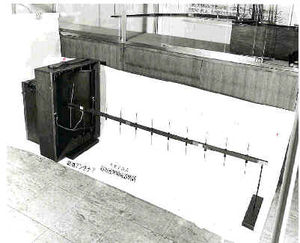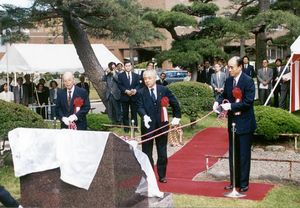Yagi Antenna: Difference between revisions
From ETHW
No edit summary |
No edit summary |
||
| (3 intermediate revisions by 2 users not shown) | |||
| Line 1: | Line 1: | ||
'''''This article is a stub. You can help the GHN by expanding it.''''' | <p>'''''This article is a stub. You can help the GHN by expanding it.''''' </p> | ||
[[Image:Yagi | <p>[[Image:Yagi Directive shortwave antenna.jpg|thumb|left|Yagi Directive Shortwave Antenna]] </p> | ||
[[ | <p>[[Image:Yagi Antenna Dedication 1616.jpg|thumb|right|1994 Ceremony recognizing the work done on the Yagi Antenna]]Japan. In 1926, Professor Hidetsugu Yagi and his assistant, Shintaro Uda published on the sensitive and [[Milestones:Directive Short Wave Antenna, 1924|highly-directional antenna]] they designed and constructed using closely-coupled parasitic elements. The antenna, which is effective in the higher-frequency ranges, has been important for [[Radar|radar]], [[Television|television]], and amateur [[Radio|radio]]. </p> | ||
[[Category:Fields,_waves_&_electromagnetics]] | |||
[[Category:Antennas]] | |||
Revision as of 19:20, 22 March 2012
This article is a stub. You can help the GHN by expanding it.
Japan. In 1926, Professor Hidetsugu Yagi and his assistant, Shintaro Uda published on the sensitive and highly-directional antenna they designed and constructed using closely-coupled parasitic elements. The antenna, which is effective in the higher-frequency ranges, has been important for radar, television, and amateur radio.

